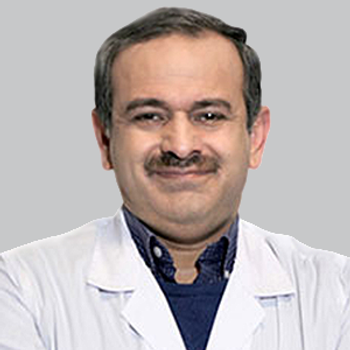
Characteristics of Bilateral Parafalcine Cortical Leptomeningeal Impairment in NMOSD, MOGAD Identified to Avoid Misdiagnosis
BPCLI was observed in both NMOSD and MOGAD but was relatively rarer in AQP4 NMOSD, with meningoencephalitis-like episodes among the sources of misdiagnosis.
Recently published findings showed that although bilateral parafalcine cortical and leptomeningeal impairment (BPCLI) is rare in patients with myelin oligodendrocyte glycoprotein antibody disease (MOGAD) and neuromyelitis optica spectrum disorder (NMOSD); however, patients may present with other similarly alike conditions, leaving room for misdiagnosis.1
Senior investigator Lei Wu, MD, Department of Neurology, the First Medical Center of Chinese PLA General Hospital, and colleagues, characterized the clinical and neuroimaging features of patients with NMOSD or MOGAD, with the intention to help clinicians in the differential diagnosis of these diseases in the future. The trial included 366 patients, 33 of which had MOGAD and 264 with aquaporin-4 (AQP4) antibody-positive NMOSD. Of these, 5 (15.1%) and 2 (0.7%) patients presenting with the clinical and/or radiological features of BPCLI were enrolled, retrospectively.
Among the 4 men and 3 women included, the number of attacks ranged from 1 to 5, with a median disease duration of 24 months (mean, 28.3 months; range, 1-61 months). All patients showed encephalitis-like symptoms, including epilepsy, headache, and fever, in addition to their typical disease-related symptoms. Two patients (cases 6 and 7) presented with signs of meningeal irritation, and 2 presented with pyramidal signs (cases 1 and 7).
"The symptoms and signs caused by bilateral parafalcine cerebral lesions complicate injury localization. In case 2, the patient had weakness in the lower limbs and urinary dysfunction, leading to the localization diagnosis of thoracic spinal cord lesions,” Wu et al wrote. "However, brain MRI ultimately confirmed BPCLI in this patient. Therefore, if patients with BPCLI present with meningoencephalitis-like attacks and signs, idiopathic inflammatory demyelinating disease, especially MOGAD and NMOSD, needs to be included in the differential diagnosis."
One patient (case 7) demonstrated cerebrospinal fluid (CSF) pressure levels above 300 mm H20, considered abnormal. Additionally, elevated white blood cell counts above 50 x 106/L were found in 3 individuals (cases 4, 6, and 7), with 1 patient (case 6) having significantly increased CSF protein levels greater than 1000 mg/L. Because of atypical presentations and CSF findings, a misdiagnosis of intracranial infection was given in 3 patients (cases 4, 6, and 7). Additionally, 1 patient was believed to have cerebral venous thrombosis.
Additional results from the clinical characteristics assessment, one patient (case 3) suffered from pain in the right eye and generalized seizures between 2016 and 2017 during the initial attack, showed spontaneous remission, and received no definite diagnosis. The illness was ignored until 2018, when BPCLI occurred during first relapse. After originally receiving a diagnosis of meningitis in 2015, patient 6 experienced recurrent generalized tonic-clonic seizures accompanied by optic neuritis and auditory hallucinations until 2020, where their diagnosis was corrected to MOGAD.
On MRI features, the frontal lobe was the most commonly affected area (n = 6), followed by the parietal lobe (n = 5). All 5 of the patients who underwent contrast-enhanced MRI showed signs of leptomeningeal enhancement, while 2 patients who underwent PWO showed hyperperfusion.
A limitation of the study was its sample size, although the rarity of BPCLI was a factor, study investigators noted. Secondly, the proportion of patients with MOGAD who showed BPCLI may have been overestimated because patients who presented with optic neuritis in the initial or recurrent stage visited the department of opthalamology rather than the department of neurology.
REFERENCES
1. Jiang W, Sun X, Huang H, et al. Bilateral parafalcine cortical and leptomeningeal impairment in MOG antibody disease and AQP4 neuromyelitis optica. J Neuroimmunol. 2022;15(369):577898
Newsletter
Keep your finger on the pulse of neurology—subscribe to NeurologyLive for expert interviews, new data, and breakthrough treatment updates.


































